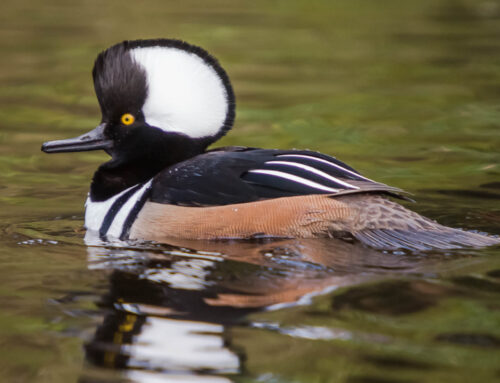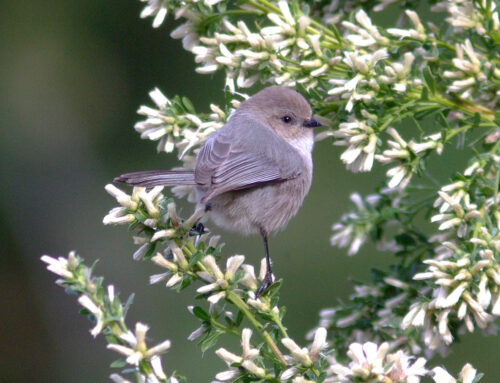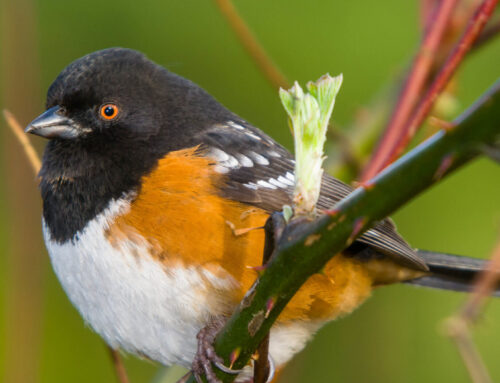Common Name
American Coot
Species Name
Fulica americana

©2007 Don Enright

©2012 Andre Chan

Appearance
34-43 cm length | 23-28 cm wingspan | 430-850 g
A medium-sized aquatic bird that looks somewhere in between a duck and a chicken – they belong to the rail family and are distant relatives of cranes. They have a small head with a hard plate extending from the base of the beak over the forehead called a facial shield, and a red spot called a callus. They also have a short, thick bill, short, rounded wings, a short tail and broad, lobed toes.
Predominately black with a white facial shield and a red spot at the top, white bill, reddish eyes, yellow legs and greenish-blue feet. Juveniles are grey with olive-brown at the top of their head.
Habitat / Behaviour
Omnivore | Wetland, ponds | Lives up to 22 years | Migratory
Coots live near water, typically inhabiting reed-lined wetlands, ponds or larger bodies of water. They prefer freshwater but may be observed around oceans during the winter. The American Coot is omnivorous and feeds on the water and dives for food, and forages on land. They eat a diet consisting mostly of algae but will also eat other aquatic plants, terrestrial plants, aquatic insects, molluscs and vertebrates. Courtship is a long process and involves intricate dances that include billing (rhythmically clashing bills), bowing and nibbling. A group of coots is called a “covert” or “cover”.
Breeding
Monogamous for life | Floating nest | 8-12 whitish eggs with brown spots | 1-2 broods per year
Parent coots show favouritism to some of their offspring, preferentially feeding chicks with brighter “chick ornaments”. In coots, chicks have bright orange feathers on their backs and throats, and those with the brightest and most elaborate ornamentation get fed the most. Interestingly, these brighter chicks are not the oldest or healthiest, but rather the younger, smaller chicks, some of which may be considered the runts of the litter. The American Coot is a victim of “conspecific brood parasitism”: within the same species eggs are laid in the nests of other birds, causing them to be hatched and the young reared by the host parents. As this generally occurs earlier in incubation, it seems the parents favour the younger, brighter chicks because they are more likely to be their own. The American Coot is one of only 3 bird species to be able to effectively identify their chicks versus that of another coot. She will then abandon impostors in her nest.






